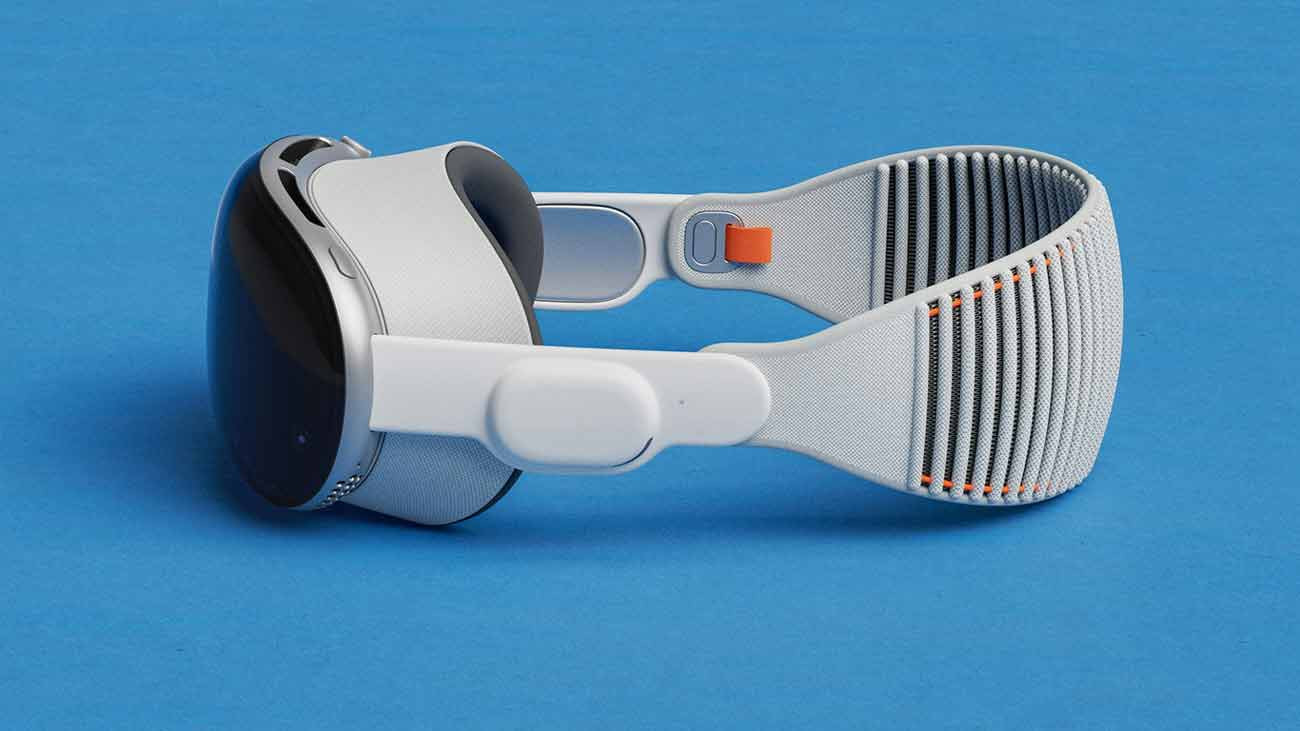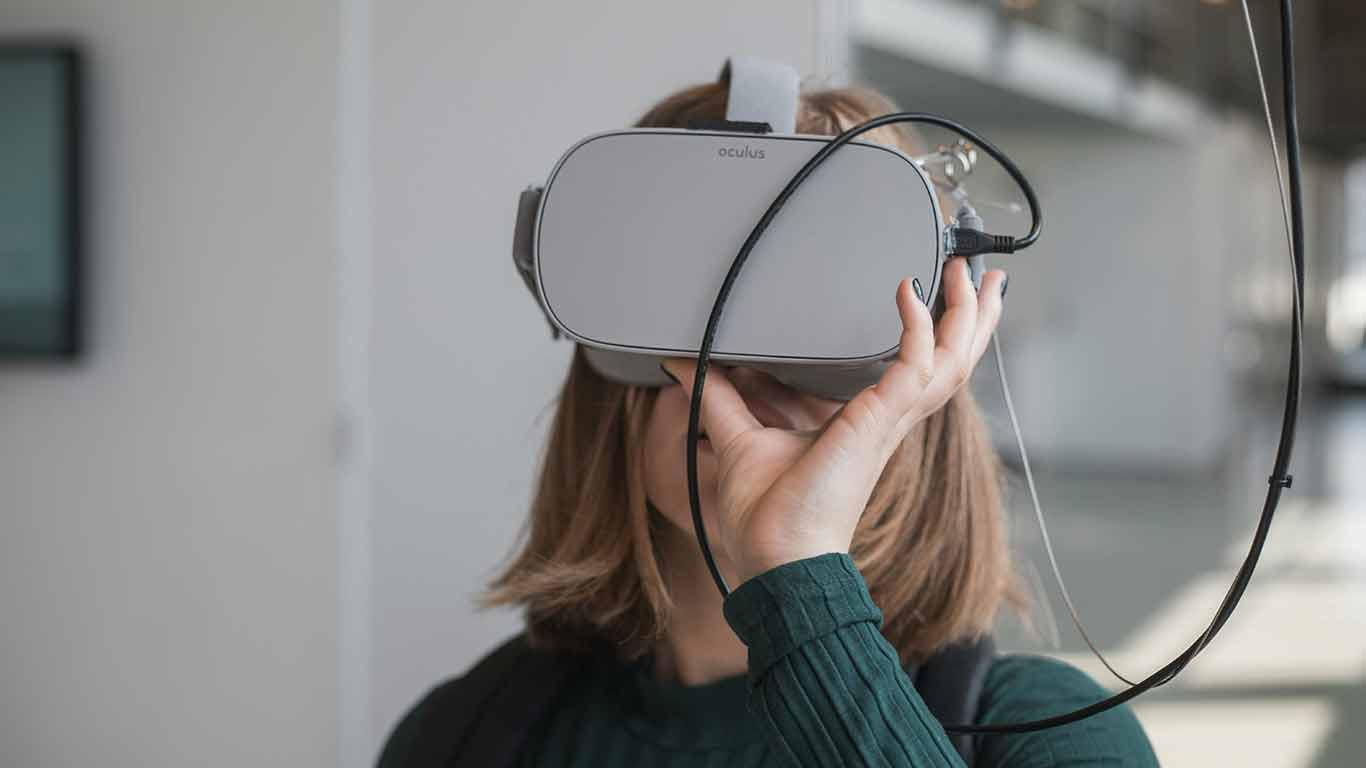Technology
February 2024
The Top 6 Tech Trends to Watch Out for in 2024

2024 is looking to be a year of significant technological progress and it’s clear that innovation is continuing to evolve at an impressive pace, introducing innovations that promise to impact both our daily lives and the global landscape. Drawing inspiration from MIT’s "10 Breakthrough Technologies," as well as a selection of other technologies we’re excited about, we’ve narrowed our focus to seven crucial trends that stand out not only for their groundbreaking potential but also for their imminent impact on our lives and the broader societal landscape.
In this blog post, "The Top 7 Technology Trends to Watch Out for in 2024," we aim to shed light on these select advancements. Each has been carefully chosen based on its potential to significantly alter industries, influence our daily routines, and offer solutions to pressing global issues. From advancements in artificial intelligence that redefine creativity and challenge ethical boundaries, to solar energy innovations paving the way for a sustainable future, these trends represent pivotal points of change.
1. AI Innovations

Artificial intelligence has become a vital part of innovation, dramatically altering how we create, communicate and consider ethical issues. Since the introduction of ChatGPT in 2022, marking a significant leap in generative AI, we have witnessed a shift in how AI technologies are applied across diverse sectors. And 2024 is no different, we can expect AI’s role to continue to expand touching nearly every aspect of our daily routines and professional environments.
In 2024, we can continue to see a significant transformation in the creative industries as a result of generative AI technologies. Raleway’s generative video models, which are evolving rapidly, These tools now enable the creation of video content that rivals the quality of industry giants like Pixar. Furthermore, generative AI's application in film production, as illustrated by its usage in movies for tasks such as de-ageing characters, showcases a future where the lines between reality and AI-generated content blur. This technological leap into the creative process signals a paradigm shift in content creation, with implications that span ethical, legal, and professional realms.
We can also expect to see a shift towards customised AI solutions for businesses as AI models mark a pivotal turn in how businesses leverage technology. These specialised models will offer nuanced solutions that cater to the unique demands of industries such as healthcare, finance, and legal. By focusing on domain-specific applications, AI is not just an auxiliary tool but a core component of operational strategy. This evolution reflects a broader trend towards personalisation and efficiency, underscored by a growing emphasis on data privacy and security in an increasingly regulated digital landscape.
However, with the growth of AI, we can expect to see an increase in deepfake technology. As generative AI becomes more accessible, the potential for misuse in creating realistic yet fabricated content raises substantial concerns, particularly in the context of misinformation and political manipulation. The evolving landscape will require a vigilant approach to regulation and ethics in AI, emphasising the importance of distinguishing between innovation and integrity in the digital age.
2. Super-Efficient Solar Cells

In 2024, the field of solar energy is set to witness significant progress with the development of perovskite tandem solar cells, which are enhancing the efficiency of converting sunlight into electricity. These advanced cells combine perovskites with traditional silicon to capture a wider range of sunlight, pushing efficiency levels beyond what silicon cells alone can achieve. In the lab, these tandem cells have already surpassed 33% efficiency, showcasing their potential to make solar power more effective and affordable.
The journey to bring these super-efficient cells to the market involves tackling challenges such as their sensitivity to environmental conditions and the need for scalable production methods. Innovations in cell design and protective measures are underway to extend their lifespan and maintain efficiency. Notably, companies and research institutions are experimenting with various techniques to improve the durability and production viability of these cells, with significant investments signalling a strong commitment to overcoming these obstacles.
Furthermore, the Fraunhofer Institute's recent achievement of a 47.6% efficiency record for a concentrated light solar cell underlines the broader industry's relentless pursuit of higher-efficiency solar technologies. This achievement represents a leap forward in maximising the power output from solar installations.
As we move forward, the advancements in perovskite tandem solar cells and other high-efficiency technologies are expected to play a crucial role in the evolution of solar power, offering the promise of more sustainable and cost-effective energy solutions for the future.
3. Apple Vision Pro

With this year’s highly anticipated release of the Apple Vision Pro, the newest product from Apple is set to revolutionise the way we interact with digital content, blending it seamlessly with the physical world. This innovative mixed-reality headset introduces a new era of spatial computing, offering an immersive experience that goes beyond traditional displays and interactions.
Apple Vision Pro's design integrates high-performance, mobile, and wearable device technology into a compact form. It features an ultra-high-resolution display system, packing 23 million pixels across two displays, and employs custom catadioptric lenses for sharpness and clarity. The device also includes advanced Spatial Audio, creating a sense of sounds coming from the environment around the user. For inputs, it uses a high-performance eye tracking system alongside the Apple silicon chips, M2 for standalone performance and the new R1 chip for real-time sensor input processing.
With Apple Vision Pro, users can expect an array of over 600 new apps specifically designed to leverage its unique capabilities, including productivity apps like Slack, Notion, and Todoist, as well as enterprise meeting apps such as Microsoft Teams, Webex, and Zoom. These apps create an unparalleled meeting experience with life-sized video tiles and shared content that can fill the space around the user, making virtual meetings more engaging and productive.
Its release marks a transformative phase for businesses, signalling a move towards more immersive and interactive experiences. This evolution in technology provides businesses with novel opportunities to engage with customers and employees in unprecedented ways, fostering deeper connections and enhancing communication and service delivery mechanisms.
Apple Vision Pro's immersive capabilities offer businesses innovative ways to interact with customers. For instance, retailers could leverage virtual try-on experiences, bridging the gap between online and physical shopping by allowing customers to visualise clothes or accessories on themselves without the need for a physical trial. Real estate agents could offer comprehensive virtual property tours, enabling potential buyers to explore properties in detail from anywhere. Education sectors could benefit significantly, with institutions creating immersive learning environments where students can partake in virtual field trips or simulations, thereby enhancing comprehension and retention of complex subjects.
In summary, Apple Vision Pro is not just a step forward in mixed reality and spatial computing; it's a leap into a future where digital and physical realms merge seamlessly. With its launch, Apple is set to redefine entertainment, productivity, and learning experiences, making them more immersive and interactive than ever before.
4. Chiplets

In 2024, the semiconductor industry is poised for a significant shift with the rising prominence of chiplets technology. A chiplet is a small, modular semiconductor component that can be combined with other chiplets to create a larger, more complex integrated circuit, such as a microprocessor. Instead of designing a single, large monolithic chip, manufacturers can develop chiplets for specific functions—like processing, memory, or input/output operations—and then integrate these chiplets together on a single package. This approach allows for greater flexibility in design, potentially lower costs, and quicker development times, as chiplets can be produced using different manufacturing processes and then combined to leverage the strengths of each.
The chiplet design philosophy represents a shift from traditional semiconductor manufacturing, addressing challenges like the slowing pace of Moore's Law, which predicts the doubling of transistors on a chip approximately every two years. As the physical and economic limits of scaling down transistors become more pronounced, chiplets offer a viable pathway to continue performance improvements by allowing for the integration of the best technology available for each component within a system.
By using chiplets, manufacturers can more easily update individual parts of a system without redesigning the entire chip, leading to more rapid iteration and innovation. This modularity makes chiplets particularly appealing for applications requiring high performance and scalability, such as data centers, high-performance computing, and AI technologies.
Companies like Advanced Micro Devices (AMD) and Intel are at the forefront, having marketed systems based on chiplets for years. The technology offers a promising pathway to continue performance gains in computing power by enabling more efficient and cost-effective manufacturing processes. The modular nature of chiplets also enhances supply chain flexibility, as components can be sourced from various suppliers, mitigating risks associated with reliance on a single source.
The chiplets market is expected to grow significantly, with projections reaching USD 107.0 billion by 2033. This growth is driven by the demand for high-performance computing across various sectors, including AI, data centres, automotive, and consumer electronics. Chiplets' cost-effectiveness and the potential for reduced manufacturing costs due to lower defect rates in smaller chips are major factors contributing to this trend. However, the market's expansion is contingent on overcoming challenges related to standardisation and interoperability among components from different manufacturers.
The semiconductor industry is addressing these challenges through collaboration and the development of open-source standards like the Universal Chiplet Interconnect Express (UCIe), which aims to facilitate the combination of chiplets made by different companies. This standardisation is crucial for the widespread adoption of chipsets, offering more freedom in rapidly evolving fields such as AI, aerospace, and auto-making.
Furthermore, recent advancements in chiplet design and manufacturing underscore the importance of continuous innovation in the field. Collaboration among industry players is essential to overcome the new development challenges presented by diversified integration, which combines different types of chiplets into a single system. This collaborative effort is aimed at creating a comprehensive chiplet ecosystem that leverages the benefits of improved performance, lower power consumption, and greater design flexibility.
In summary, chiplets technology in 2024 is set to transform the semiconductor industry by offering a viable solution to continue performance improvements beyond the limitations of traditional monolithic chip designs. The success of this transformation hinges on overcoming technical and standardisation challenges, which industry players are actively addressing through collaboration and innovation
Enjoying what you're reading?
See our work5. Virtual and Augmented Reality

We can expect to see the realms of virtual and augmented reality (VR and AR) continue their trajectory of innovative growth in 2024, reshaping multiple aspects of both personal and professional life. These technologies are merging to create immersive internet experiences, moving beyond traditional digital interactions to offer rich, engaging environments that foster collaboration and shared experiences. Key trends to watch include the convergence of AR and VR to build immersive internet spaces, the advancement of multi-sensory technology enhancing user engagement through touch, smell, and full-body suits, and the growing importance of generative AI in creating digital environments and characters.
The wearable AR market is also experiencing significant innovations, with notable developments from leading tech companies. Apple's Vision Pro is introducing cutting-edge features like high-resolution displays and extensive sensor arrays to provide immersive 3D environments for retail and other industries. Meanwhile, Meta's Quest series offers affordable AR capabilities with full-colour pass-through and mixed-reality features, such as learning applications.
On the industrial front, AR technologies are being tailored to enhance productivity and safety in harsh environments. Devices like the RealWear Navigator 520 and Navigator Z1 are designed for rugged use, offering hands-free operation and enhancing worker efficiency through voice-controlled interfaces and high-resolution cameras for documentation and remote assistance.
In healthcare, VR is being used for rehabilitation exercises presented as games, which excite nerve pathways and can reduce pain perception. This approach not only makes therapy more engaging for patients but also provides measurable data on their progress. AR glasses, equipped with voice interfaces and displays, offer hands-free interaction and accessibility features such as captioning for the hearing impaired, making daily tasks more manageable.
In engineering, AR and VR technologies facilitate the visualisation of complex designs and simulations, enabling engineers to interact with their creations in a virtual space, identify issues, and test solutions in real time. This accelerates the development process and enhances the precision and quality of engineering projects.
Moreover, AR and VR are being used in marketing to create engaging and interactive campaigns that captivate consumers' attention. Spatial computing technologies transform physical spaces into immersive marketing platforms, allowing brands to connect with their audience in novel and memorable ways.
As these technologies evolve, they promise to transform the way we interact with the digital world, offering more immersive, intuitive, and engaging experiences across various domains.
6. Social Media

We can foresee the social media landscape undergoing a transformative shift in 2024, marking a new era in digital interaction and content consumption. This year, we’re observing an intriguing resurgence of longer video content. Platforms such as Instagram Reels and TikTok are pushing the boundaries of content length, reflecting a growing desire for more in-depth storytelling and engagement. This trend is a nod to changing user behaviours and the platform’s ambition to captivate audiences for longer periods, offering a richer canvas for creators and brands to weave their narratives.
Simultaneously, the realm of engagement is evolving, with private conversations in Direct Messages (DMs) becoming the new frontier for interaction. As social feeds become increasingly saturated, the essence of personal connection is shifting towards more intimate spaces. This move signifies a deeper yearning for meaningful interactions, challenging brands to adapt their engagement strategies to these emerging private forums.
In a quest for autonomy and privacy, decentralised social networks are gaining momentum as viable alternatives to traditional platforms. Networks like Mastodon and Minds are rising in popularity, driven by users' demand for greater control over their data and a less curated social experience. This shift towards decentralised platforms highlights a critical turning point in social media, emphasising user-centric values and data privacy.
Furthermore, the integration of AI in content recommendation algorithms is set to deepen, with platforms like Facebook and Instagram leveraging this technology to curate personalised content feeds. This AI-driven personalisation aims to enhance user engagement by tailoring content to individual preferences, marking a significant leap in how content is discovered and consumed.
Authenticity is emerging as a key theme, with users gravitating towards genuine content and interactions. This trend towards authenticity presents an opportunity for brands to forge real connections and show empathy, thereby resonating more deeply with their audience.
Lastly, the search for Twitter alternatives reflects a broader trend towards diversification in the social media landscape. Users are exploring new platforms that offer different experiences or prioritise features such as privacy and decentralisation, suggesting a move towards a more fragmented and diverse social media ecosystem in the future.
As we navigate through 2024, these trends offer a glimpse into the future of social media, where longer content, private engagement, decentralised networks, AI-driven personalisation, and authenticity are shaping a new digital narrative. Brands and creators adapting to these shifts will find new opportunities to connect with audiences in meaningful ways, setting the stage for a dynamic and evolving social media landscape.
Our Final Thoughts
As we look towards 2024, the advancements in technology from augmented reality to social media are shaping up to redefine our interactions with the digital world. The shift towards longer videos, the emergence of decentralised social platforms, and the evolution of private digital interactions showcase our growing desire for meaningful content and control over our online experience. At the same time, innovations in wearable AR technologies and the blending of virtual and physical realities are setting the stage for a future where our online and offline lives become more intertwined.
The developments in social media, including the move towards more private conversations and the rise of social commerce, reflect a dynamic digital landscape that continues to offer new ways to connect and engage. These changes underscore the importance of being adaptable and considering the ethical implications of technology on privacy and society.
Looking ahead, 2024 presents an exciting opportunity to leverage technology to enhance our lives in significant ways. However, it's crucial to approach these advancements with a balance, ensuring they contribute positively to our experiences while being mindful of their broader impact. As we embrace the potential of these technologies, let's aim to build a digital future that is inclusive, thoughtful, and enriches our lives.
Enjoyed This Tech Insight?
Don't miss out on the latest tech trends and developments by subscribing to our Tech Roundup Newsletter where every two weeks, we share the biggest tech headlines from around the world.
Make sure to subscribe here!
